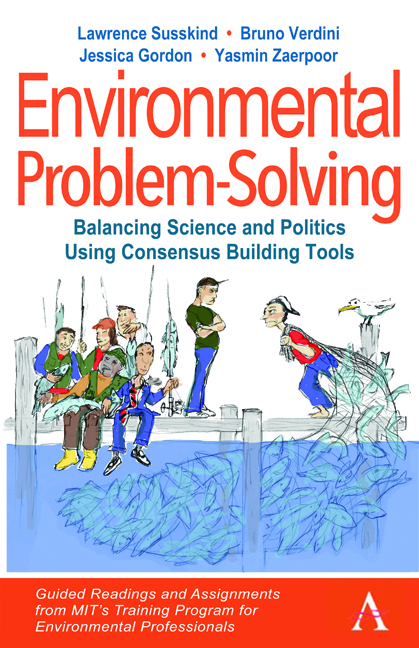 Environmental Problem-Solving: Balancing Science and Politics Using Consensus Building Tools
Environmental Problem-Solving: Balancing Science and Politics Using Consensus Building Tools Book contents
- Frontmatter
- Contents
- Acknowledgments
- Credits and Permissions
- Introduction
- Unit I: Influencing The Environmental Policy-Making Process
- Unit II: Ethical Dilemmas In Environmental Problem-Solving
- Unit III: Developments In Policy And Project Analysis
- Unit IV: Collective Action To Solve Environmental Problems
- Final Exam
- Conclusions
- Biographies
- References
- Index
Unit I: - Influencing The Environmental Policy-Making Process
Published online by Cambridge University Press: 15 December 2020
- Frontmatter
- Contents
- Acknowledgments
- Credits and Permissions
- Introduction
- Unit I: Influencing The Environmental Policy-Making Process
- Unit II: Ethical Dilemmas In Environmental Problem-Solving
- Unit III: Developments In Policy And Project Analysis
- Unit IV: Collective Action To Solve Environmental Problems
- Final Exam
- Conclusions
- Biographies
- References
- Index
Summary
Introduction
In this first section, we examine how national governments formulate and implement environmental policies. Fairly frequently, environmental problemsolving, whether at the project, municipal, regional or state level, requires us to work within, against or toward improving a specific policy. When that is the case, it is crucial to know how (and have the tools) to impact the policymaking process. There is a great deal of published work on the subject of public policy-making in general, but our focus is on environmental policymaking in particular. We are especially interested in how practitioners and citizens can analyze environmental problems and affect environmental policy change.
The Steven Cohen excerpt sets the stage by providing an overview of environmental policy-making from both a theoretical and a practical perspective. Cohen explains why every effort to “solve” an environmental problem is fundamentally a values issue (i.e., “right” versus “wrong”); a political issue (i.e., in which winners and losers are selected); a science and technology issue (where uncertainty and innovation are up for discussion); a policy design and economics issue (i.e., in which regulatory strategies and incentives for changing consumer, corporate and citizen behavior must be selected); and a management issue (i.e., where organizational capacity probably needs to be enhanced). In other words, Cohen draws attention to the inherent challenge of environmental policy-making when there are so many factors to consider.
Michael Howlett, M. Ramesh and Anthony Perl take this discussion a step further, exploring numerous theories of policy design that explain how public agendas are set, policy is formed and decisions are made and implemented. They provide one of the most concise and clear descriptions of different models of policy-making. As you read through this excerpt, think about your own opportunity to influence environmental policy-making. If we think of policy-making as a linear process (as is described in the “textbook” model of policy-making), the process starts with agenda setting before going into policy formulation, decision-making, implementation and evaluation. Different actors have more influence at different stages of the policy-making process. For example, those involved in the first stage—agenda setting—define the problem, thereby largely shaping the nature of the policy.
- Type
- Chapter
- Information
- Environmental Problem-Solving: Balancing Science and Politics Using Consensus Building ToolsGuided Readings and Assignments from MIT's Training Program for Environmental Professionals, pp. 5 - 105Publisher: Anthem PressPrint publication year: 2020


